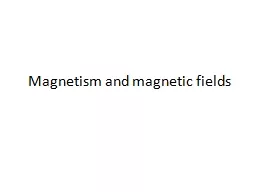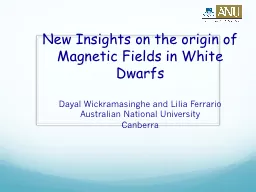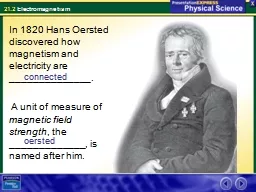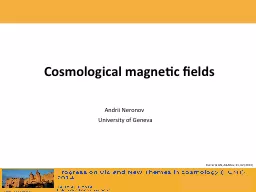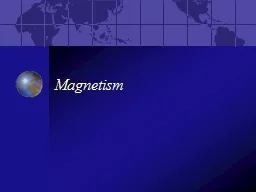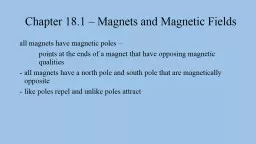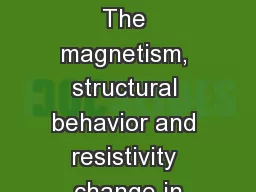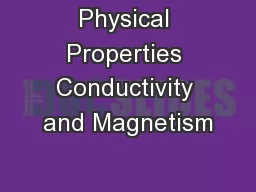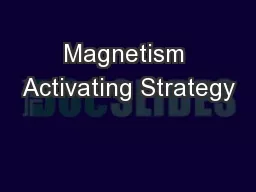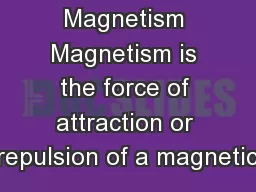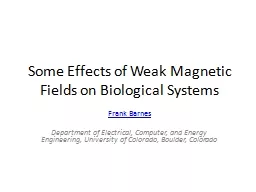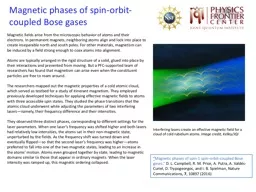PPT-Magnetism and magnetic fields
Author : phoebe-click | Published Date : 2018-09-21
The Shape of Magnetic Fields Where is the magnet stronger Which direction do the arrows go What does this tell you about the Earths poles Induced and Permanent Magnets
Presentation Embed Code
Download Presentation
Download Presentation The PPT/PDF document "Magnetism and magnetic fields" is the property of its rightful owner. Permission is granted to download and print the materials on this website for personal, non-commercial use only, and to display it on your personal computer provided you do not modify the materials and that you retain all copyright notices contained in the materials. By downloading content from our website, you accept the terms of this agreement.
Magnetism and magnetic fields: Transcript
Download Rules Of Document
"Magnetism and magnetic fields"The content belongs to its owner. You may download and print it for personal use, without modification, and keep all copyright notices. By downloading, you agree to these terms.
Related Documents

